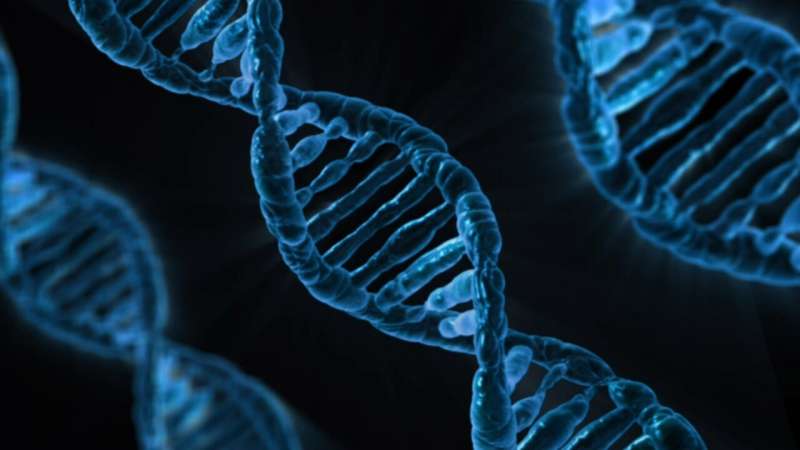Credit: CC0 Public Domain
The A143T variant of the GLA gene is associated with an increased risk of Fabry cardiomyopathy, according to a new study. The variant plays a role in lipid metabolism. According to the researchers, patients carrying the mutation and manifesting changes in the heart should initiate treatment to prevent the disease from progressing. The study, conducted at the University of Eastern Finland and Kuopio University Hospital, was published in the journal Heart.
However, not all carriers of the mutation develop Fabry cardiomyopathy, and the association of the A143T variant with the disease is not fully understood yet.
According to Professor Johanna Kuusisto from the University of Eastern Finland, the study was inspired by clinical work with patients.
"We had to consider the feasibility of initiating expensive enzyme replacement therapy when Cardiologist Kati Valtola discovered a cardiomyopathy in three members of the same family. Genetic testing revealed that they all carried the A143T variant, whose role in the pathogenesis of Fabry cardiomyopathy has been previously questioned," Professor Kuusisto says.
Fabry cardiomyopathy is a rare disease of the lipid metabolism where α-galactosidase A, i.e. the GLA enzyme, is missing or is functionally deficient due to a gene mutation. It leads to the accumulation of harmful lipids on blood vessel walls, the heart, the kidneys and the nervous system. More than 900 mutations of the GLA gene that are associated with Fabry cardiomyopathy are known to date. The symptoms caused by these mutations vary greatly in terms of their severity. In the classical and most severe form, GLA enzyme activity is fully or almost fully non-existent, and symptoms begin already in childhood. Patients are usually men and their symptoms are severe, including pain, sweating disorders and gastrointestinal problems. Typically, they develop a severe multisystem disease before reaching middle age. Women and men carrying a less severe mutation have some GLA enzyme activity, and they do not become symptomatic until adulthood. In this form of the disease, lipid usually accumulates only in the heart. The heart muscle thickens and starts to be replaced by connective tissue. Patients suffer from shortness of breath, chest pain and arrhythmia, and they may need a pacemaker due to conduction disorders. Cardiomyopathy may lead to heart failure, which is the most common cause of death in people with Fabry cardiomyopathy.
Ultrasound and magnetic imaging of the heart play a key diagnostic role. Fabry cardiomyopathy is confirmed by genetic testing and by analysing GLA enzyme activity from a blood sample. In unclear cases, heart and kidney biopsy is used to confirm lipid accumulation.
Asymptomatic carriers should be monitored, too
The progression of Fabry cardiomyopathy can be prevented by intravenous enzyme replacement therapy and, in carriers of some specific mutations, by orally administered drugs. Timely treatment can reduce the accumulation of harmful lipids. Untreated Fabry cardiomyopathy deteriorates the quality of life and predisposes to premature death. Even patients with minor symptoms can be at risk of a sudden death, as Fabry cardiomyopathy is associated with the risk of arrhythmia.
In Finland, more than 100 people so far have been diagnosed with Fabry cardiomyopathy or as asymptomatic carriers of the GLA mutation, and 19 of these individuals are from Kuopio University Hospital's catchment area.
"We are currently monitoring 13 patients of whom eight receive enzyme replacement therapy," Kuusisto says.
The newly published study analysed cardiomyopathy-associated gene mutations, including the variant A143T of the GLA gene, in altogether 11 members of the same family. The carriers of this variant were carefully examined using, e.g., laboratory tests and CMR and PET-CT imaging, and heart biopsies were taken from two patients with a history of heart symptoms.
Professor Kuusisto says that it wasn't clear in the beginning of the study whether the variant in question causes Fabry disease, or whether it is just a harmless mutation.
"Our study now shows that the A143T variant, a mutation of the GLA gene, is likely to cause late-onset Fabry cardiomyopathy. It is important to initiate enzyme replacement therapy in patients who are carriers of this mutation and who manifest changes in their heat. In addition, their family members who also are carriers of this mutation should be monitored for Fabry cardiomyopathy," Professor Kuusisto points out.
More information: Kati Valtola et al. Cardiomyopathy associated with the Ala143Thr variant of the α-galactosidase A gene, Heart (2020). DOI: 10.1136/heartjnl-2019-315933
Journal information: Heart
Provided by University of Eastern Finland





















